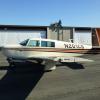Starting a New Arguement
-
Members Online
- 1980Mooney
- CCAS
- NicholasM20
- jetdriven
- Born2Fly
- AdamJD
- AH64Bennett
- Bpvlbv
- TheAv8r
- warren.huisman
- Chris_H
- Grumpy
- TCC
- Louis21
- Garmin Aviation Team
- haymak3r
- Rwsavory
- donkaye, MCFI
- varlajo
- atpdave
- TangoTango
- Rmfriday
- hazek
- Aerodon
- acekng1
- Mooney in Oz
- jlunseth
- Ragsf15e
- 201er
- kortopates
- Adverseyaw0317
- YuriE
- Wingover
- PeteMc
- Skyland
- Oldguy
- JCCV
- Z W
- Mcstealth
- takair
- FlyboyKC


Recommended Posts
Join the conversation
You can post now and register later. If you have an account, sign in now to post with your account.